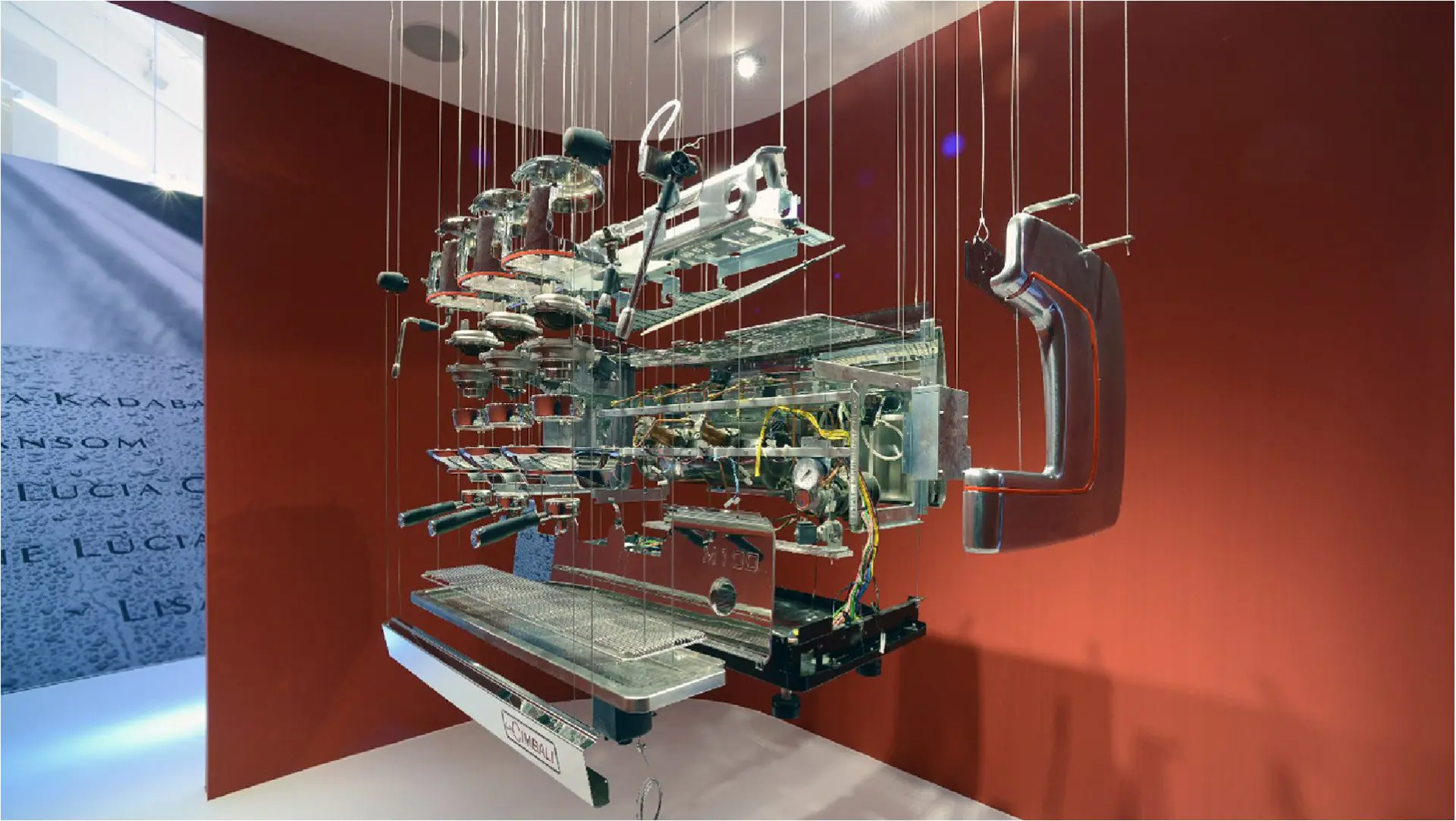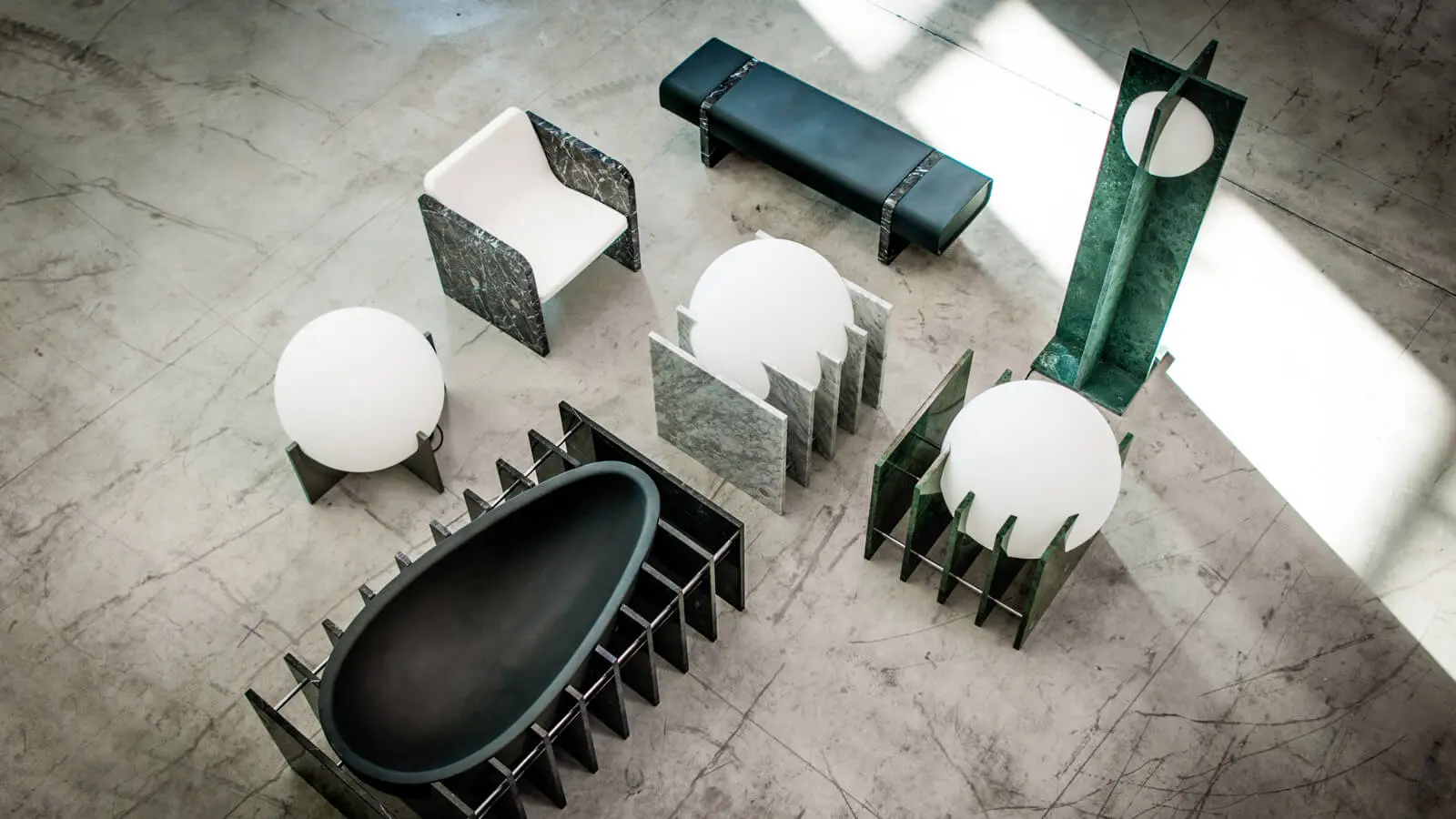Resetting the meaning of design to its full potential – Interview with Valerio Cometti of V12 Design

In a conversation about the real and, oftentimes, forgotten purpose of design, we explore the empowering impact of deep design thinking for strategic business purposes with Valerio Cometti, founder of Milan-based V12 Design.
Entirely embracing the multidisciplinary essence of design, the Milan based company Valerio Cometti+V12 Design reveals itself as a Creative Solution Provider, by tackling not only technical and aesthetic issues, but also by presenting strategic tools, design thinking, and design services for businesses of diverse sectors.
As a forward-thinking company, V12 Design is involved in varied business issues of its clients with a complete set of knowledge, skills, and activities that are blended together to provide answers, innovative ideas, and unprecedented solutions.
Having a portfolio that includes architecture, art, electronics, furniture, lifestyle, kitchen appliances and branding projects, the client list of V12 Design features Ferrari, LaCimbali, Brionvega, Riva 1920, Bertazzoni, Faema, Epta Refrigeration and many other international clients from start-ups to large multinational companies.

While V12 Design merges the engineering approach with a design vision in its projects, the ultimate value provided lies in the so-called “deep design thinking”. This is an innovative outlook that companies themselves might have never encountered due to a terrible misconception of the design discipline being associated with mere aesthetics, or even worse, with just superficial and frivolous aspects of a product.
The holistic approach of Valerio Cometti, founder of V12 Design, shows client companies to the power of creative thinking, introducing the designers’ mindset among teams that have never been trained to tackle a business problem combining strategic and creative components.
In this interview, DesignWanted converses with Valerio Cometti on the impact of the design-led mindset within companies of any sector, to understand how infusing creative thinking in business decisions can boost well-established corporations and newly formed startups.

What is the greatest misconception about the design discipline?
Valerio Cometti: “The greatest misconception about my industry is that design is all about shapes, materials and textures. I think it’s a misconception that has also been fuelled by a certain type of colleagues of mine.
Design is certainly about shapes, materials and texture, but it is also about much more. Such misconception has crawled inside the head of company owners and managers and therefore sometimes they don’t know when is the right time to look for a designer and also what type of competence to look within the portfolio of a designer or a design firm.”

Why many companies do not understand the value of design and what opportunities are they missing?
Valerio Cometti: “It’s a difficult question. Sometimes I think this happens because it’s easier to classify designers as “those-you-call-when-you-want-a-pretty-object”. But I also believe that a certain type of designer has contributed to the birth of this label, not being able to connect with the industrial side of the project or not being able to deliver a strategic business vision or not being able to talk about the economics of a business plan: a designer must be like a film director, capable of giving his or her input in all areas of the project.
When working with this type of creative consultant, a company receives back a whole different wealth of ideas: not just the exciting shape that the end-user will want to buy, but also a strategic vision, an eclectic experience based on several different markets, an innovative outlook on materials and processes the company itself has never encountered.
In other words, a good designer must be an agent of contamination and curiosity: he or she must stimulate the client company with all sorts of different suggestions, ideas, innovations and pieces of knowledge that the company itself wouldn’t have met otherwise.”
Curious to know more about V12 Design? See: How Milanese company V12 Design merges the engineering approach with a design vision
What is the unique outcome of the design thinking process?
Valerio Cometti: “The design thinking process is 90% attitude and 10% method.
Many consultants don’t like such definition: I personally don’t like overly-academic approaches with hyper-structured workflows and wall-to-wall Post-IT notes…
The true outcome of the design-thinking approach is change: change in product, in materials, in process, in service, in storytelling, in distribution strategy and so on.
You can apply the design thinking approach to any area of a company and by shaking dogmas and “we’ve always done it this way”: a good creative mind can stimulate the client by cross-contaminating and teaching the importance of lateral thinking and of looking at problems from a new point of view.
Sometimes, a big role as a creative thinker is being able to ask the right questions: it’s often almost more important than giving the right answers, because it sets a fertile analysis within the company itself, instead of just feeding it an answer.”

Can you give us a real-life example of the impact of design thinking on non-design companies?
Valerio Cometti: “We could discuss at length what makes a company a design-company. Is Pepsi and Co. a design company? Is Deutsche Telekom a design company? Well, they must consider themselves so, since they both have a pretty talented design team and design directors.
Having said that, in a more traditional meaning we have often worked with non-design companies. In such companies, the first area to work on is their own culture. Non-design companies are imbued with the evolutionary mindset: “every day you must improve what you did the day before”.
They don’t often like disruption, or maybe they are just not used to that. Furthermore, they don’t often look outside their own sectors. Don’t get me wrong, they can be very successful and very capable, but the first step with “non-design companies” is to let creativity, curiosity, contamination become part of their culture, of their everyday vocabulary.
We have developed several workshops and seminars to accelerate this process within companies such as insurance groups, oil&gas behemoths, postal service companies and we always had a great time in doing so.”

Has your studio done something “out-of-the-box” to boost the culture of curiosity and contamination?
Valerio Cometti: “We believe so strongly in these values that we decided it was time to “give away” some of our experience. Of course, as a company, we live off the consultancies we deliver to our clients, whether in the form of product design, graphic design, strategic design and so on, but about 6 months ago we decided it was time to do something more and it was time to spread the word further.
So we decided to invest some of our time in developing a series of videos for our Youtube channel called “V12 Design-Sparks”.
The idea behind these videos is to send your brain a friendly spark, a gentle electric shock by dropping every week a new video on an innovative company, a new technology, a groundbreaking business model.
We will scout these stories for you, present them in 5-6 minutes max, and then we’ll leave it up to you to dig deeper, to shape your own opinion, to decide whether you want to know more and investigate further that idea.
People are so used to being spoon-fed these days that they are no longer used to search, to connect autonomously: V12 Design-Sparks video series brings innovation and contamination to restore your curiosity to a level we all used to have when we were kids!”
In which area do you think designers should invest more in terms of competences?
Valerio Cometti: “I will never get tired of repeating this: design, unlike art, is not just the expression of one’s values and creativity. Design is a key part of a complex creation of industrial value and as such the value of design needs to be pushed through an equally complex web of managers, budgets, technical constraints, marketing issues, logistic parameter and so on.
If a designer sees him or herself only confined to the generation of a trendy shape, it will be so incredibly hard to see that lovely shape in a shopping window any time soon. Designers need to become more knowledgeable in a vast range of areas in order to be perceived as true problem solvers by the client.
Let’s not forget that often our innovative ideas come with a cost, due to their disruptive nature and the least we can do is to assist our client in a vast array of situations and matters.
We have been doing so following two paths: an internal one, that meant investing in cutting edge software, multidisciplinary training for our staff, allowing our team to regularly take time to experiment in new areas and so on, and an external one that meant building strong partnerships with leading companies in adjacent areas.
I can for instance name our strong connection with Parametric Design, a high-end industrial engineering firm with some of the most amazing projects in their portfolio or with Shin Software, in our opinion the best real-time interactive 3D experience environment we’ve ever encountered.
This dual approach has seen our capability as problem-solvers grow exponentially!
Collaborating with these awesome partners we have empowered our role as strong solution providers: from the very initial ideas (barely etched in a business plan) to its design, its industrial to its captivating visualisation worldwide.”
Check out more projects by V12 Design! The icon, the past and the future come together in Brionvega’s Alpha Television by V12 Design

